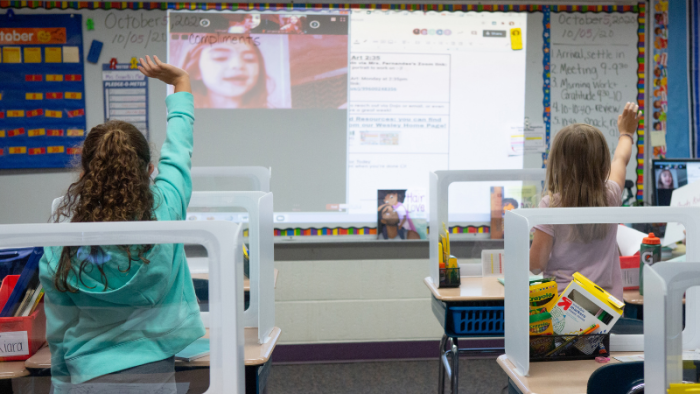As exponential technological progress and pedagogical refinements reshape educational landscapes, schools are adopting flexible learning frameworks to address today’s increasingly diverse student needs. The conventional classroom structure is undergoing a long-overdue transformation, with forward-thinking educators recognizing the urgent imperative to adapt instruction and opportunities within the rapidly changing ecosystem. Today we will explore the top five ways schools are embracing flexible learning models, revolutionizing the educational experience for both students and educators.
Integrating Blended Learning Environments:
One prominent innovation is blended classrooms that interleave face-to-face instructor engagement with online self-directed content, enabling heightened personalization and adaptive, self-paced progress. At its core, blended learning emphasizes optimizing the benefits of physical and virtual tools by combining interactive digital activities, enriched multimedia content and customized learning modules. The integration of advanced educational software for schools has revolutionized the learning experience, offering innovative tools and resources to enhance both teaching methodologies and student engagement. This facilitates fluid curricula that can match a spectrum of learning preferences. With teacher-led instruction augmented by tech-enabled flexibility, blended environments provide accessible, holistic and learner-centric growth.
Implementing Flipped Classroom Techniques:
Flipped classrooms represent a monumental shift in instructional design, serving as a springboard for active application. In a flipped model, students first learn foundational course concepts independently through consuming pre-recorded video lectures, readings or interactive modules outside the classroom. Educators then dedicate classroom time to conduct discussions, while also guiding collaborative projects and problem-solving sessions that allow for meaningful concept integration. This intentional structure empowers students to arrive with key context, ready to actively direct their synthesis while enabling teachers to provide nuanced coaching.
Flexible Scheduling and Remote Learning Options:
Schools are also expanding flexible scheduling and remote learning options to increase access and personalize engagement. Hybrid models combining in-person and interactive virtual courses accommodate locational, scheduling and health barriers, giving more students freedom to customize learning around responsibilities. Whether opting for fully remote or blended delivery, flexible access prepares learners for increasingly digital, decentralized and asynchronous workforce dynamics while retaining social connections.
Personalized Learning Paths and Adaptive Technologies:
Personalized learning leverages smart adaptive technologies to quantify student progress and deliver dynamically tuned content. Sophisticated algorithms track assignment completion rates, question responses and concept proficiency indicators in real-time. The accumulated performance data informs a profile of learner strengths and improvement areas to trigger appropriate learning resources, reminders and interventions tailored to address specific needs. Students can thrive by progressing at optimal paces without slipping through the cracks.
Embracing Project-Based and Experiential Learning:
Project-based experiential learning founded on real-world simulations takes center stage for resonating relevance. Designing solutions for mock business cases, building community programs and collaborating with industry partners allows for meaningful yet Risk-free testing. This learn-by-doing approach boosts engagement, sharpens critical thinking and cements collaborative abilities – precisely the skills demanded in fast-evolving workplaces. Blending creative freedom with structured evaluations guides students to translate ideas into practice.
As personalized, learner-centric frameworks gain traction across educational institutions, schools are demonstrating their resolute commitment to equip students with the flexibility, tools and future-proof competencies to fluidly master an increasingly volatile world brimming with possibility. The traditional one-size-fits-none classroom is unquestionably evolving, making room for personalized educational journeys. Schools should implement integrated education management systems for streamlined operations, incorporating features such as student information, attendance tracking, and school fee management system. In this dynamic shift, customization becomes the cornerstone, fostering a transformative self-realization that organically blossoms within each student. The rigid constraints of a uniform learning environment are being replaced by an adaptive, student-centric approach, allowing for a diverse array of learning paths. This transformation not only acknowledges the unique needs and learning styles of individuals but also empowers them to explore, excel, and self-actualize within the educational landscape. The dawn of personalized education heralds a future where every student’s potential can authentically thrive.

